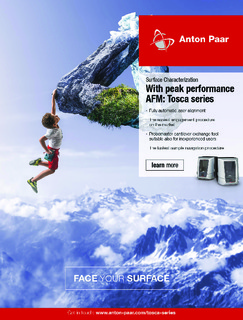| dc.contributor.author | Bergh, Tina | |
| dc.contributor.author | Johnstone, D.N. | |
| dc.contributor.author | Crout, P | |
| dc.contributor.author | Høgås, Simon | |
| dc.contributor.author | Midgley, Paul A. | |
| dc.contributor.author | Holmestad, Randi | |
| dc.contributor.author | Vullum, Per Erik | |
| dc.contributor.author | Van Helvoort, Antonius | |
| dc.date.accessioned | 2020-01-29T12:36:42Z | |
| dc.date.available | 2020-01-29T12:36:42Z | |
| dc.date.created | 2020-01-04T19:40:55Z | |
| dc.date.issued | 2019 | |
| dc.identifier.issn | 0022-2720 | |
| dc.identifier.uri | http://hdl.handle.net/11250/2638614 | |
| dc.description.abstract | Scanning precession electron diffraction (SPED) enables the local crystallography of materials to be probed on the nanoscale by recording a two‐dimensional precession electron diffraction (PED) pattern at every probe position as a dynamically rocking electron beam is scanned across the specimen. SPED data from nanocrystalline materials commonly contain some PED patterns in which diffraction is measured from multiple crystals. To analyse such data, it is important to perform nanocrystal segmentation to isolate both the location of each crystal and a corresponding representative diffraction signal. This also reduces data dimensionality significantly. Here, two approaches to nanocrystal segmentation are presented, the first based on virtual dark‐field imaging and the second on non‐negative matrix factorization. Relative merits and limitations are compared in application to SPED data obtained from partly overlapping nanoparticles, and particular challenges are highlighted associated with crystals exciting the same diffraction conditions. It is demonstrated that both strategies can be used for nanocrystal segmentation without prior knowledge of the crystal structures present, but also that segmentation artefacts can arise and must be considered carefully. The analysis workflows associated with this work are provided open‐source. | nb_NO |
| dc.language.iso | eng | nb_NO |
| dc.publisher | Wiley | nb_NO |
| dc.rights | Navngivelse 4.0 Internasjonal | * |
| dc.rights.uri | http://creativecommons.org/licenses/by/4.0/deed.no | * |
| dc.title | Nanocrystal segmentation in scanning precession electron diffraction data | nb_NO |
| dc.type | Journal article | nb_NO |
| dc.type | Peer reviewed | nb_NO |
| dc.description.version | publishedVersion | nb_NO |
| dc.source.journal | Journal of Microscopy | nb_NO |
| dc.identifier.doi | https://doi.org/10.1111/jmi.12850 | |
| dc.identifier.cristin | 1766294 | |
| dc.relation.project | Norges forskningsråd: 197405 | nb_NO |
| dc.description.localcode | © 2019 The Authors. Journal of Microscopy published by John Wiley & Sons Ltd on behalf of Royal Microscopical Society This is an open access article under the terms of the Creative Commons Attribution License, which permits use, distribution and reproduction in any medium, provided the original work is properly cited. | nb_NO |
| cristin.unitcode | 194,66,20,0 | |
| cristin.unitname | Institutt for fysikk | |
| cristin.ispublished | false | |
| cristin.fulltext | preprint | |
| cristin.qualitycode | 1 | |

